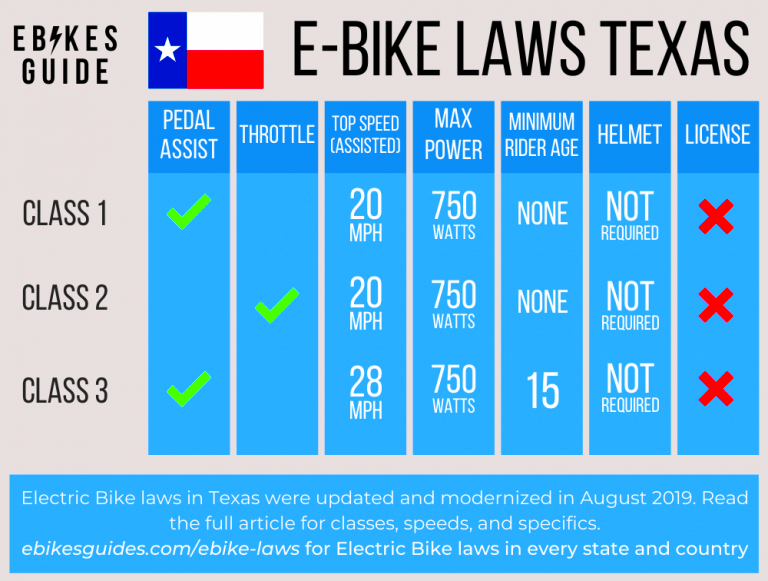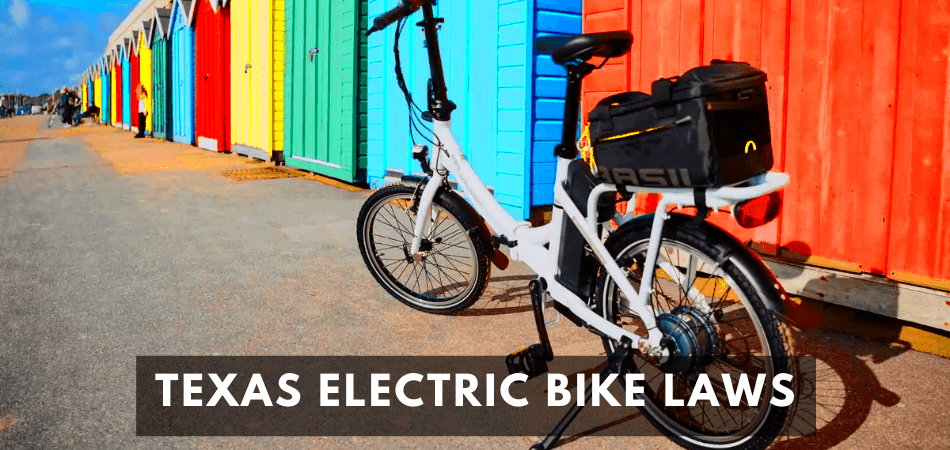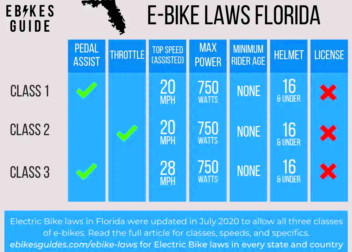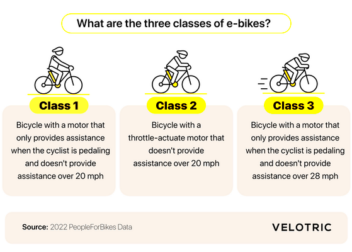A Guide to Texas E-Bike Laws and Regulations
Texas has embraced the growing popularity of electric bikes, or e-bikes, and established laws to regulate their use. These laws aim to ensure safety for riders and pedestrians alike. Understanding these regulations is essential for anyone looking to ride an e-bike in Texas. This guide will help you navigate the rules and make your e-biking experience enjoyable and lawful.
Types of E-Bikes in Texas

In Texas, e-bikes are categorized into three main classes based on their speed and motor capabilities:
- Class 1: These e-bikes are equipped with a motor that assists the rider only when pedaling and ceases assistance at speeds of 20 mph.
- Class 2: This class includes e-bikes with a motor that can propel the bike without pedaling, also stopping assistance at 20 mph.
- Class 3: These e-bikes offer pedal assistance up to 28 mph but require riders to wear a helmet.
Each class has specific regulations regarding where they can be ridden, so it’s crucial to know which class your e-bike belongs to before hitting the road.
Age Requirements for E-Bike Riders

Texas has set certain age requirements for e-bike riders to promote safety. Here’s a breakdown:
- Class 1 and Class 2: Riders of any age can operate these e-bikes. However, those under 18 must wear a helmet.
- Class 3: Riders must be at least 15 years old. Those under 18 are also required to wear a helmet.
It’s essential for parents and guardians to supervise younger riders, ensuring they understand safety protocols. Familiarizing yourself with these age requirements helps create a safer environment for everyone on the road.
Where You Can Ride E-Bikes
Knowing where you can ride your e-bike is crucial for a smooth and enjoyable experience. In Texas, e-bikes can be ridden in various locations, but there are specific rules to follow:
- Bicycle Paths: E-bikes are allowed on dedicated bike paths and lanes, which are designed to keep cyclists safe.
- Roads: You can ride e-bikes on public roads, but you must follow the same traffic rules as traditional bicycles. Be cautious and stay alert to vehicle traffic.
- Trails: Many parks and recreational areas allow e-bikes on designated trails. However, always check local regulations, as some trails may restrict e-bike access.
- Sidewalks: Riding on sidewalks is generally discouraged for safety reasons. However, local ordinances may vary, so it’s essential to check your city’s rules.
By understanding where you can ride, you can enjoy your e-bike while respecting the laws and keeping yourself and others safe.
Safety Equipment Requirements for E-Bikes
Safety should always be a priority when riding an e-bike. Texas has specific equipment requirements to ensure riders are protected. Here’s what you need:
- Helmet: All riders under 18 must wear a helmet. It’s a smart choice for adults too, as it can help prevent serious injuries.
- Lights: If riding at night, having a front white light and a red rear reflector or light is essential for visibility.
- Reflective Gear: Wearing bright or reflective clothing can help other road users see you, especially in low-light conditions.
Always check your e-bike’s brakes and tires before riding, ensuring everything is in good working order. Being prepared and safe can make all the difference on your rides.
Licensing and Registration for E-Bikes
One of the great things about e-bikes in Texas is that they typically don’t require a license or registration, making them accessible for many riders. Here’s a breakdown of the current regulations:
- No License Required: You do not need a driver’s license to operate an e-bike, which is a plus for younger riders.
- No Registration Needed: E-bikes do not require registration with the state. This keeps things simple and hassle-free for riders.
- Insurance: While insurance isn’t mandatory, it’s wise to consider getting coverage to protect against theft or accidents.
Remember to always carry identification while riding, as local law enforcement may request it. Understanding these regulations helps ensure a smooth and enjoyable riding experience.
Rules for E-Bike Use on Roads and Trails
Understanding the rules for riding e-bikes on roads and trails is vital for ensuring a safe and enjoyable experience. In Texas, these rules help protect both riders and other road users. Here’s what you need to know:
- Follow Traffic Signals: E-bike riders must obey all traffic signals and signs just like other vehicles on the road. This means stopping at red lights and yielding to pedestrians.
- Ride with Traffic: Always ride in the same direction as traffic. Riding against traffic can lead to dangerous situations.
- Use Bike Lanes: When available, utilize bike lanes. They’re designed to keep you safe and separate from vehicle traffic.
- Keep Right: Stay to the right side of the road or path unless passing another cyclist or vehicle.
- Signal Turns: Use hand signals to indicate turns or stops to other road users. This helps keep everyone informed and safe.
By adhering to these rules, you can contribute to a safer riding environment for everyone, making your e-biking experience more enjoyable.
Penalties for Violating E-Bike Laws
Just like any other set of traffic laws, there are penalties for violating e-bike laws in Texas. Understanding these penalties can help keep you informed and safe. Here are some potential consequences:
- Fines: Failing to adhere to e-bike regulations can result in fines. These can vary based on the nature of the violation.
- Confiscation: In some cases, law enforcement may confiscate your e-bike if you are found in violation of specific laws.
- Community Service: For certain offenses, you might be required to complete community service as part of your penalty.
- Points on License: Although e-bikes don’t require a driver’s license, some violations may impact your driving record if you hold a license.
To avoid penalties, always stay informed about the latest e-bike laws and ride responsibly. Being aware of these rules can help you enjoy your rides without worries.
FAQ about Texas E-Bike Laws
Here are some frequently asked questions regarding Texas e-bike laws. This section aims to clarify common concerns and help you navigate the regulations:
- Do I need a license to ride an e-bike? No, Texas does not require a license to ride an e-bike.
- Can I ride my e-bike on sidewalks? Sidewalk riding is generally discouraged, but local ordinances may vary, so check your city’s rules.
- Are there weight limits for e-bikes? While there are no state-mandated weight limits, manufacturers may have specific recommendations.
- What happens if I’m caught riding without a helmet? Riders under 18 can face fines for not wearing a helmet, while adults are strongly encouraged to wear one for safety.
- Are e-bikes allowed in state parks? Many state parks permit e-bikes on designated trails, but it’s best to check each park’s specific rules.
If you have more questions about e-bike laws in Texas, don’t hesitate to reach out to local authorities or check official resources for updated information. Staying informed will enhance your riding experience.
Conclusion on Texas E-Bike Regulations
Texas e-bike regulations aim to create a safe and enjoyable riding environment for everyone. Understanding the laws regarding e-bike classes, where you can ride, safety equipment, and penalties for violations is essential for all riders. Whether you’re a beginner or an experienced cyclist, following these guidelines will help ensure your rides are both fun and lawful. By respecting these rules, you contribute to a safer community for pedestrians and other road users. So, gear up, stay informed, and enjoy the freedom of riding an e-bike in the Lone Star State!


